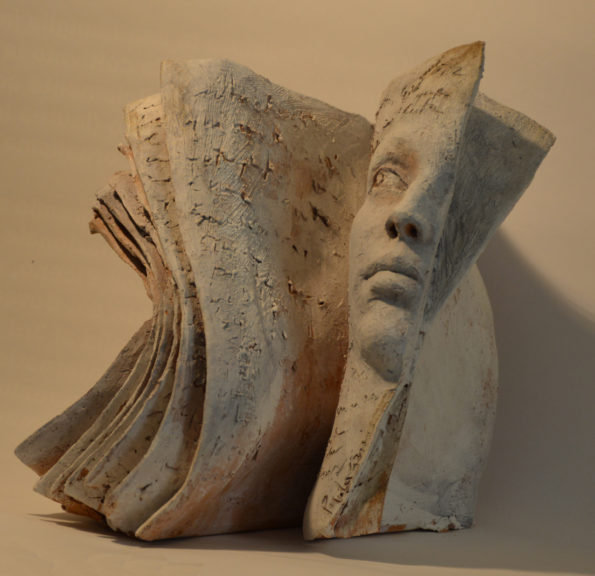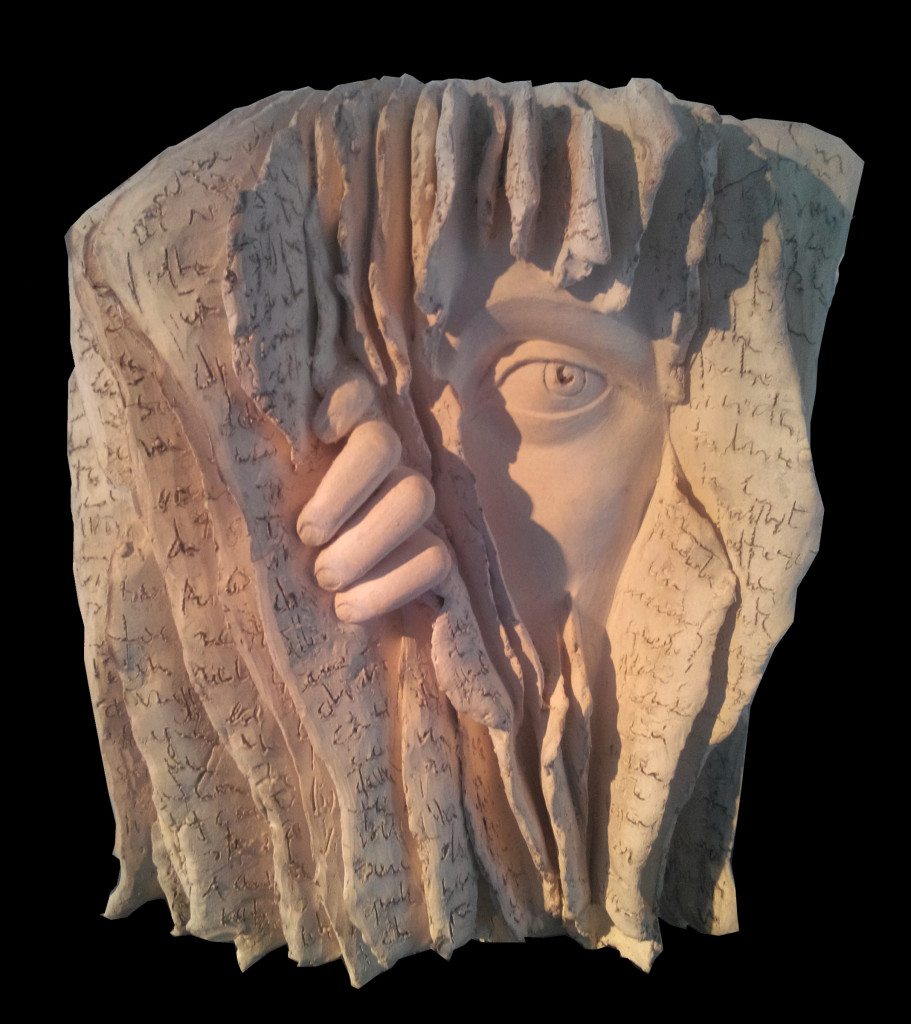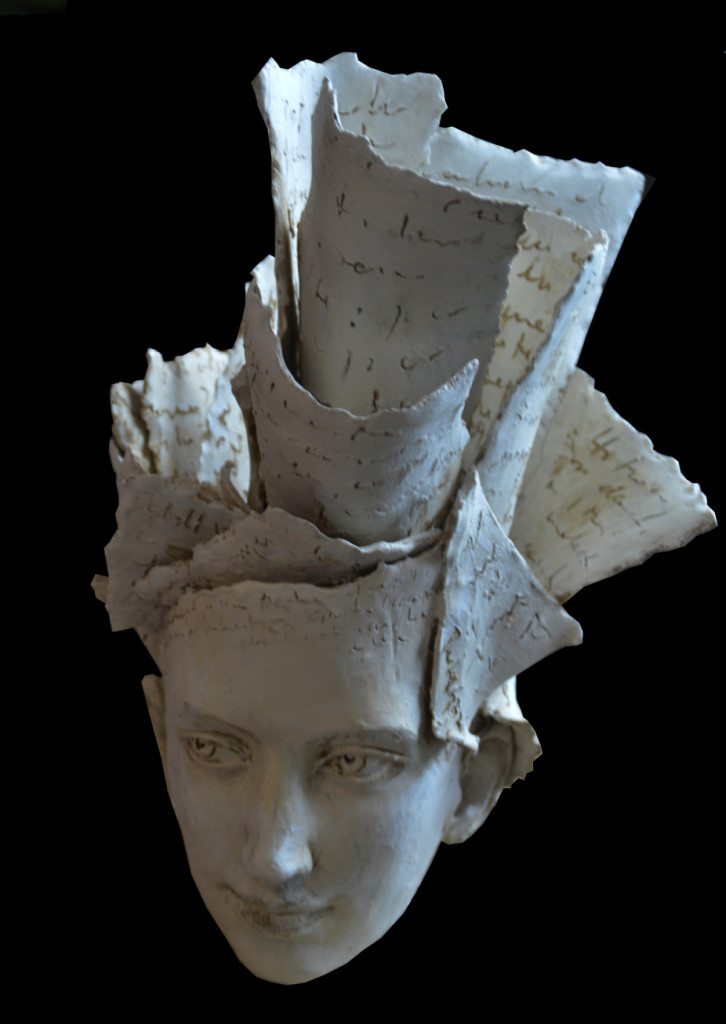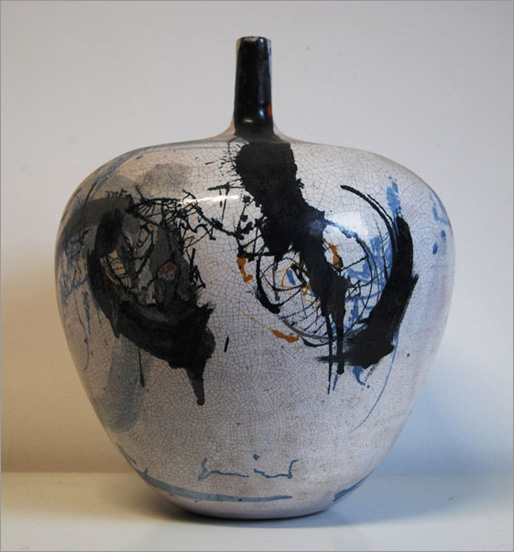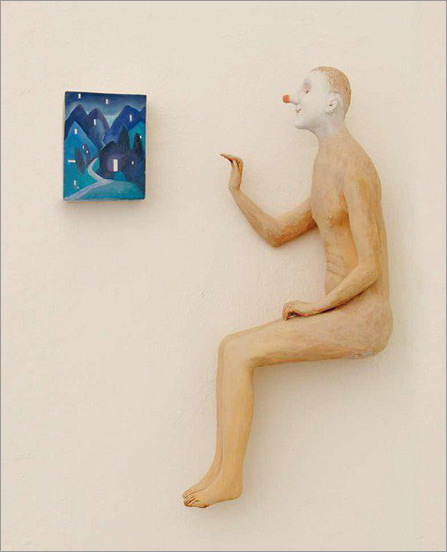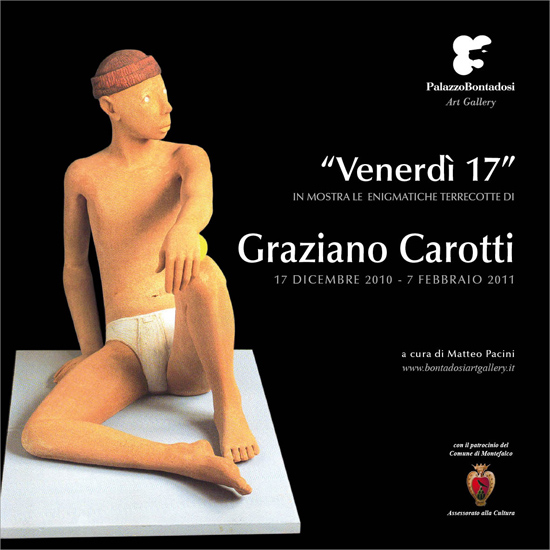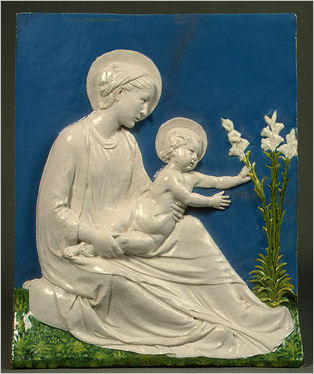Paola Grizi clay sculptures explore the human soul through the visual imagery of a woman’s face. An ageless face, able to capture and return, enhanced, the deep meanings behind fundamental relations, such as mother and child, culture and individuals, men and nature.
Stories are an important topic in Paola’s art, as well. Book pages filled with minuscule characters become alive under the viewers’ eyes. A hand, a nose, her iconic face appear to shatter the mystery in the narration and question its truths or maybe add to them.
Or, as in one of her clay sculptures, pages make their way out of the head of the woman. Dreams, memories, thoughts that impose their own meaning to reality
Born in Rome, Paola’s started modeling as a young girl in the studio of her grandfather, a well know Italian painter and sculptor. She graduated in Literature, but soon after Uni she followed her passion for sculpture, gaining for herself an International reputation. Recently, she has begun casting her works in bronze.
By Tiziana Manzetti

